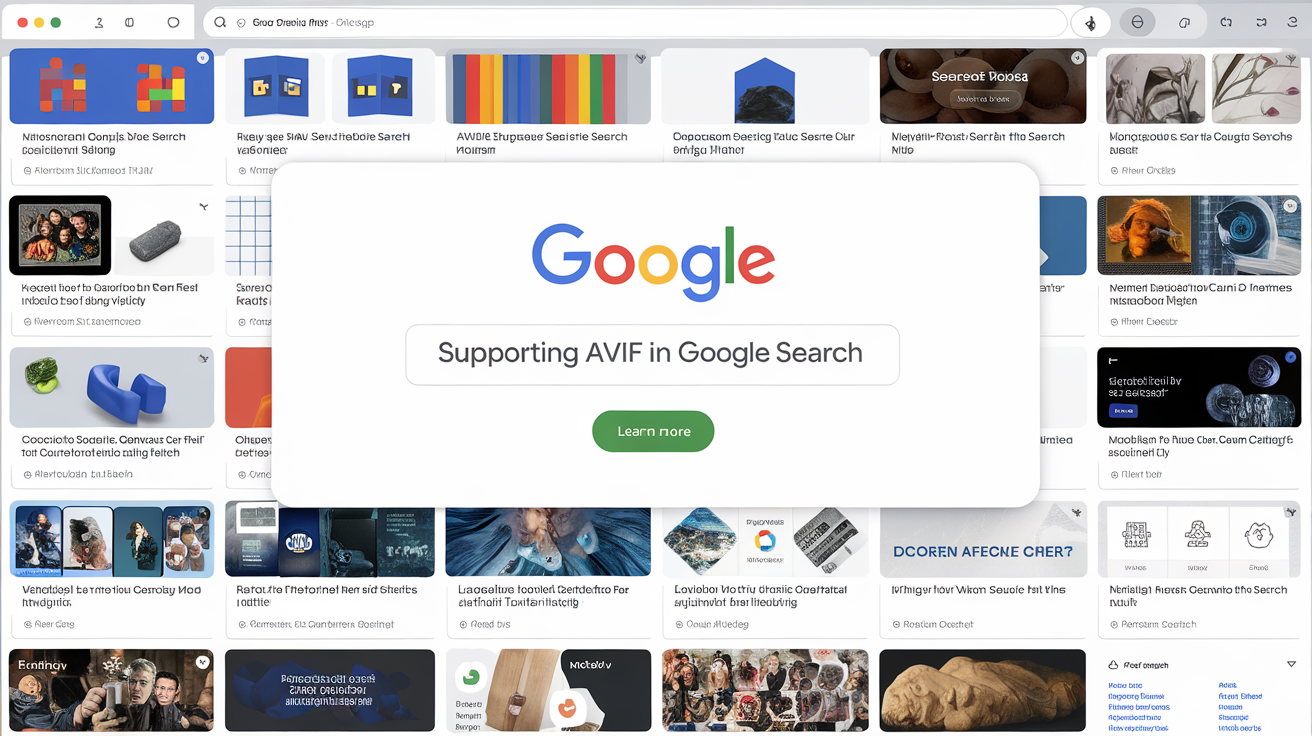AVIF (AV1 Image File Format) has quickly become one of the most commonly used image formats across the web. It’s an open image format based on the AV1 video compression technology, offering smaller file sizes while maintaining high image quality. Recently, Google announced an exciting update: AVIF is now a supported file type in Google Search, including Google Images and any other areas where images appear in Google’s search results.
This means that if your website uses AVIF images, Google can now index them without any extra steps or special configurations. This makes it easier for webmasters, content creators, and SEO professionals to leverage this efficient file format for better web performance.
Let’s dive deeper into what AVIF is, why it’s beneficial, and what this update means for you.
What is AVIF?
AVIF is a relatively new image file format that uses the AV1 video compression standard to encode images. It offers several key advantages, making it an increasingly popular choice for websites:
- Smaller file sizes: AVIF compresses images better than older formats like JPEG and PNG. This means faster loading times, which can lead to a better user experience.
- High image quality: Even with its superior compression, AVIF maintains excellent image quality, making it ideal for both high-resolution photography and illustrations.
- Transparency & HDR support: AVIF supports advanced features like transparency (like PNG) and High Dynamic Range (HDR), giving it versatility across different types of web content.
Why is AVIF Important?
AVIF’s rise to popularity is closely tied to its efficiency. Since it produces smaller files, websites using AVIF images can load faster. This can improve user experience, lower bounce rates, and potentially boost SEO rankings, as page speed is a ranking factor in Google’s algorithms. Additionally, faster loading pages reduce server load and bandwidth usage, helping site owners save costs on hosting and data delivery.
Google Search Now Supports AVIF
With Google now fully supporting AVIF files in its Search and Images results, your AVIF images can be indexed just like any other image format. This means better visibility for your content in search results without needing to modify your site to accommodate this update.
Google’s web crawlers, Googlebot and Crawley, will automatically check if your images are in AVIF format and index them if compatible. There is no need for manual configuration or any special tagging, which makes the process seamless for webmasters.
Supported Across Major Platforms and Browsers
One of the reasons AVIF has gained traction is its broad support:
- Major browsers like Chrome, Firefox, and Safari have added AVIF compatibility.
- Popular content management systems (CMS) such as WordPress and Joomla also support AVIF, making it easy for users to upload and display AVIF images.
- Cloudflare and other CDN services support AVIF, helping deliver images quickly and efficiently.
This widespread support across platforms makes AVIF a future-proof choice for web developers and designers looking to optimize images.
Things to Consider Before Switching to AVIF
Despite its many advantages, you shouldn’t rush to convert every image on your site to AVIF. Here’s why:
- Evaluate your needs: While AVIF works well for most images, other formats like JPEG or WebP may still perform better in certain cases, especially for simpler images or those requiring backward compatibility with older systems.
- Test first: Take the time to test AVIF images on your site to ensure they perform well across different browsers and devices. It’s not necessary to make sweeping changes without first assessing what works best.
- Set up redirects: If you decide to change your image format and update filenames or file extensions (e.g., from .jpeg to .avif), make sure to implement server-side redirects. This ensures that any links to the old image URLs still work and are properly redirected to the new AVIF images, maintaining your SEO efforts and avoiding broken links.
Conclusion: AVIF in Google Search
With AVIF now supported in Google Search, it’s easier than ever to use this modern image format without worrying about indexing or visibility issues. Its advantages in terms of file size and quality make it an attractive option for many websites, especially those focused on speed and user experience.
However, as with any technology update, it’s important to approach it thoughtfully. Evaluate your needs, test AVIF images on your site, and make sure to handle any filename changes with proper redirects. By doing so, you can enjoy the benefits of AVIF while keeping your site optimized for performance and search visibility.
Key Takeaway: AVIF is here to stay, and with Google’s support, it’s easier than ever to use this image format to enhance your website’s speed and user experience!

I’m Shivam Panchal, an SEO expert and digital marketer from Delhi. I run SEO Shades, where I share practical SEO tips, link-building strategies, and website growth hacks. With over 3 years of experience, I help businesses boost their online visibility and rank higher on Google.


